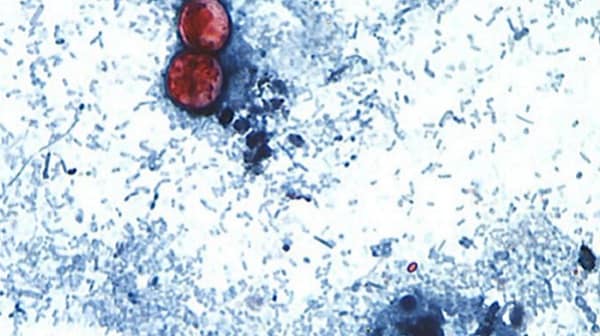Key points
- Most healthy people will eventually recover from cyclosporiasis without treatment although their illness may be prolonged.
- Trimethoprim-sulfamethoxazole (TMP-SMX) is the treatment of choice for cyclosporiasis.
- No vaccine for cyclosporiasis is available.

Treatment options
Trimethoprim-sulfamethoxazole (TMP-SMX)(sold as Bactrim,* Septra,* or Cotrim*) is the treatment of choice for cyclosporiasis.
Drugs
Dosage
Trimethoprim-sulfamethoxazole (TMP-SMX)
Adults: TMP 160 mg plus SMX 800 mg (one double strength tablet), orally, twice a day, for 7 – 10 days.
Patients infected with HIV may need longer courses of therapy.
Pediatric patients ≥2 months to 18 years: 8 – 10 mg/kg TMP and 40 – 50 mg/kg SMX per day, orally, in 2 divided doses for 7 – 10 days.
Most people who have healthy immune systems will recover without treatment. If not treated, the illness may last anywhere from a few days to a month or longer. Symptoms may seem to go away and then return one or more times (relapse).
No highly effective alternatives have been identified yet for persons who are allergic to (or are intolerant of) TMP-SMX. Approaches to consider for such persons include observation and symptomatic treatment, use of an antibiotic whose effectiveness against Cyclospora is based on limited data, or desensitization to TMP-SMX. The latter approach should be considered only for selected patients who require treatment, have been evaluated by an allergist, and do not have a life-threatening allergy.
Anecdotal or unpublished data suggest that the following drugs are ineffective:
- Albendazole
- Azithromycin
- Diloxanide furoate
- Doxycycline
- Metronidazole
- Nalidixic acid
- Quinacrine
- Tetracycline
- Tinidazole
- Trimethoprim (when used as a single agent)
Although data from a small study among people living with HIV in Haiti suggested that ciprofloxacin might have modest activity against Cyclospora, substantial anecdotal experience among many immunocompetent persons suggests that ciprofloxacin is ineffective.
*Use of trade names is for identification only and does not imply endorsement by the Public Health Service or by the U.S. Department of Health and Human Services.
Care precautions
Treatment in Pregnancy
Trimethoprim-sulfamethoxazole (TMP-SMX) is a pregnancy category C drug. TMP-SMX should be used during pregnancy only if the potential benefit justifies the potential risk to the fetus. TMP-SMX should be avoided near-term because of the potential for hyperbilirubinemia and kernicterus in the newborn.
Pregnancy Category C: Either studies in animals have revealed adverse effects on the fetus (teratogenic or embryocidal, or other) and there are no controlled studies in women or studies in women and animals are not available. Drugs should be given only if the potential benefit justifies the potential risk to the fetus.
Treatment During Lactation
Trimethoprim-sulfamethoxazole (TMP-SMX) is excreted in breast milk. TMP-SMX generally is compatible with breastfeeding of healthy, full-term infants after the newborn period. However, TMP-SMX generally should be avoided by women when nursing infants who are premature, jaundiced, ill, or stressed, or who have glucose-6-phosphate dehydrogenase deficiency.
Treatment in Pediatric Patients
The safety of trimethoprim-sulfamethoxazole (TMP-SMX) in children has not been systematically evaluated. Use in children less than 2 months of age generally is not recommended.
